Australian curator, writer and educator Kate Goodwin has been in attendance at the 2025 Venice Architecture Biennale and reports back on some of the highlights.

Great Britain Pavilion, photo by Marco Zorzanello.
May 23rd, 2025
This May, Venice has once again been swarmed with architects, curators, and critics for the opening of the Venice Architecture Biennale, running through to the end of November. The 2025 curator, Carlo Ratti, has brought together over 720 participants making 300 contributions under his theme of Intelligens. Natural. Artificial. Collective. The result is as intense as it sounds, bringing an arsenal rammed with exhibits ranging from the technologically speculative to the materially explorative – with little consideration for access requirements.
Notably, from this deluge, the Golden Lion Jury highlighted Australian researcher Kate Crawford and her collaborator Vladan Joler’s fascinating installation Calculating Empires: A Genealogy of Technology and Power Since 1500. The Australian Pavilion, HOME, has also been widely praised for its powerful presence that speaks to a deep connection with Country and foregrounds First Nations ways of knowing, being and doing, amplified by a program of yarning sessions over the opening week.
Here are a few more highlights that offer a glimpse into the current global architectural conversations:
Canal Café
Amidst a Biennale full of speculation, Diller Scofidio + Renfro and their collaborators prove that their ingenious idea to turn canal water into coffee can be a captivating reality. They have designed a striking apparatus that stands on the edge of the Venice lagoon, drawing its brackish waters up transparent tubes and through raised, hybrid natural-artificial purification systems – including a ‘micro-wetland’ with grasses spraying from its top. Once cleaned, the water is steamed and feeds an espresso machine that sits in a circular light-weight structure to deliver a much-needed (and tasty) coffee to Biennale visitors.

Build of Site
Danish Pavilion
The curator of the Danish Pavilion, architect Søren Pihlmann, has taken the need to update the 1950s pavilion and transformed it into an opportunity. Building sites have a seductive appeal for many – they reveal the unseen and offer aesthetic and textural richness. This one tells a story and proposes a shift: to reject disposability and embrace the existing. It acknowledges the environmental toll of construction and exposes the vast resources it consumes.
Through partial dismantling, materials have been studied, measured, assessed, categorised and documented to explore their potential for reuse. The exhibition demonstrates innovative ways to repurpose surplus materials, urging us to rethink what we create and contribute to the world.

Unravelling New Spaces
Pavilion of the Republic of Serbia, Giardini
In a poetic and lyrical installation, a lofty wool structure will gradually unravel over the six-month course of the Biennale. Powered by more than 150 solar-driven wall-mounted motors, the yarn will be returned to its original ball form leaving the space empty. Designed and created by a collaborative team of architects, textile designers and electrical engineers, the stunning, dynamic knitted form draws inspiration from both traditional cultural practices and the ‘Belgrade Hand’ (1963), the world’s first artificial bionic hand. The installation celebrates the tactile nature of creation while integrating machine learning, advocating for circularity in architecture and challenging us to continually reinvent and evolve.
Curated by Slobodan Jović with architects Davor Ereš, Jelena Mitrović and Igor Pantić; Sonja Krstić and Ivana Najdanović (textile structure design) and Petar Laušević (engineer).

Internalities: Architectures for Territorial Equilibrium
Spanish Pavilion, Giardini
While a relatively traditional presentation of architecture, the Spanish Pavilion is well-curated and beautifully displayed. It explores the use of local, regenerative and low-carbon materials to advance the decarbonisation of architecture. A central room, titled Balance, presents 16 intriguing architectural projects, each shown with images and two models on a set of scales – one a construction detail, the other the buildings territorial placement.
In five surrounding rooms are cases studies that look at regional ecologies of resources under the themes of materials, energy, trades, waste and emissions. It is a collection of great projects that offer food for thought.
Curated and design by architects Roi Salgueiro and Manuel Bouzas.

GBR: Geology of Britannic Repair
Great Britain, Giardini
The Brits have bravely addressed their colonial legacy with a British-Nigerian curatorial team including Cave_bureau. They ambitiously suggest a future that positions architecture as a non-extractive practice geared towards repair, restitution and renewal. Taking an axis from Britain via the Great Rift Valley to Kenya, it includes a series of installations that redress the broken connections between people, ecology and land.
The neo-classical building has been covered in a veil of clay and glass beads, while, Cave_bureau has taken 3D scans of caves used as slave-holding chambers and recreated them in woven rattan, reclaiming them as spaces of healing. There is also one of the only contributions on Gaza by Palestine Regeneration Team, called Objects of Repair, that reappropriates rubble turning the ruin into an active architectural skin.
Curated by Cave_bureau, Owen Hopkins and Kathryn Yusoff.
Related: More from Kabage Karanja of Cave_bureau

Assembly
Pavilion of Ireland
Cotter & Naessens Architects have curated a poetic and polemic installation that underscores architecture as an act of assembly, through both congregation and construction. Inspired by Ireland’s Citizens’ Assembly – established in 2016, they gather 99 demographically representative residents to develop collective recommendations on issues like marriage equality and biodiversity loss – the installation offers a space for reflection and dialogue. It features a beautifully crafted, circular timber modular structure, accompanied by an ephemeral soundscape, creating an environment conducive to contemplation and consensus-building. This speculative prototype envisions a space that can be deployed in local community contexts, fostering civic debate and connection.
Venice Architecture Biennale
labiennale.org

(Fr)Agile Systems
Pakistan Pavilion, Spazio 996/A
(Fr)Agile Systems is poetic and poignant installation, that centres on pink rock salt from the Northern Punjab region – a material that changes in response to its environs, dissolving, rehardening, reshaping – agile and fragile. Countries in the Global South have been disproportionately impacted by climate change and Pakistan is no exception. Contributing less that 0.5% to global greenhouse emissions, the country has seen glacial flooding, flash floods, droughts, forest fires, food scarcity, hazardous air pollution and resulting mass displacement. Highlighting the precarities, and inequities of the climate crisis, including with oxidizing copper maps, the exhibition advocates for a proactive, equitable, and locally led response. It includes compelling sectional drawings of ancient rock monuments and proposes new ways of building as architects.
Organised by Coalesce Design Studio (Karachi) and MAS/Architects (Lahore) with Valeria Romagnini Solfato (Venice).

Chinampa Veneta
Pavilion of Mexico, Arsenale
Chinampa Veneta reimagines the ancient Mesoamerican chinampa agricultural system—still in use in Xochimilco, south of Mexico City —as a living installation in Venice. Chinampas are rectangular, organic, man-made islands built with layers of mud and vegetation in shallow lakes, that purify water, capture carbon, and produce food. At the centre of the installation is an organic structure planted with an agroforestry system practiced in the Veneto, la vite maritata—where vines intertwine with trees, and the milpa, a Mesoamerican indigenous polyculture system. A charming film includes interviews with Xochimilco-locals and shows them farming from boats and speaking of their deep care for land, lake and sustaining community.
Curated by Estudio Ignacio Urquiza y Ana Paula de Alba, Estudio María Marín de Buen, ILWT, Locus, Lucio Usobiaga Hegewisch & Nathalia Muguet, Pedro&Juana
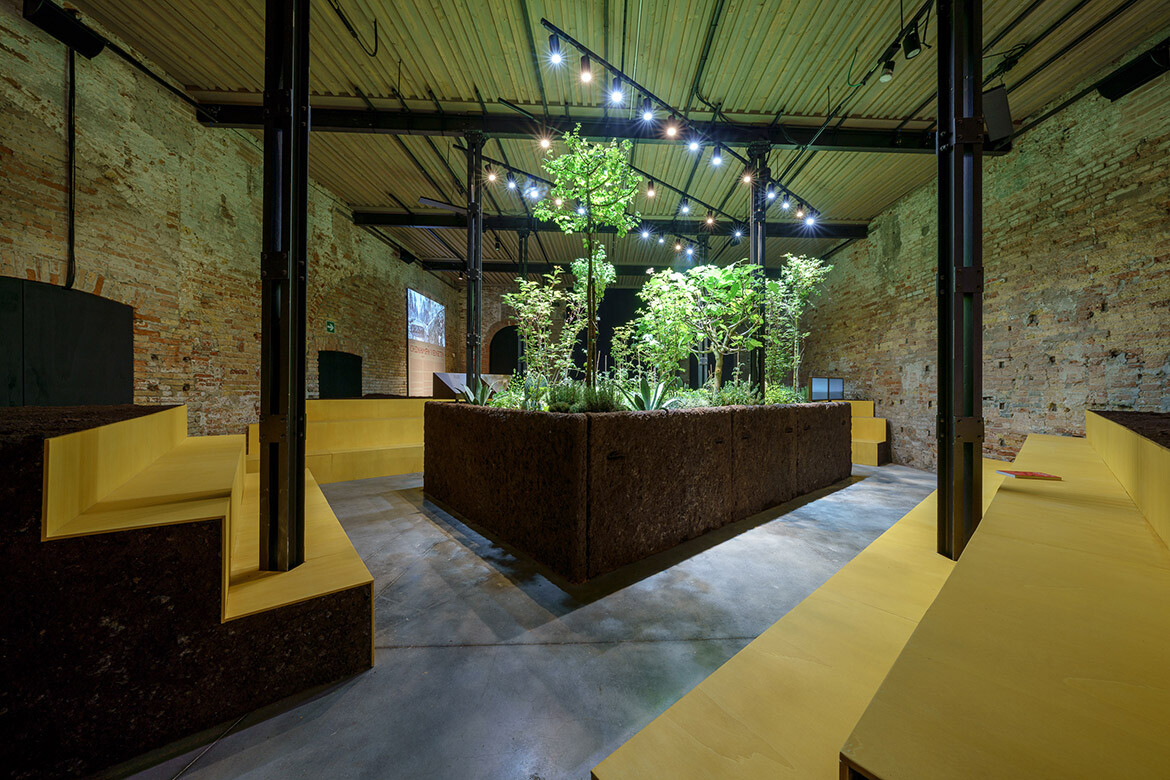
INDESIGN is on instagram
Follow @indesignlive
A searchable and comprehensive guide for specifying leading products and their suppliers
Keep up to date with the latest and greatest from our industry BFF's!
The new range features slabs with warm, earthy palettes that lend a sense of organic luxury to every space.

A longstanding partnership turns a historic city into a hub for emerging talent

The undeniable thread connecting Herman Miller and Knoll’s design legacies across the decades now finds its profound physical embodiment at MillerKnoll’s new Design Yard Archives.

For Aidan Mawhinney, the secret ingredient to Living Edge’s success “comes down to people, product and place.” As the brand celebrates a significant 25-year milestone, it’s that commitment to authentic, sustainable design – and the people behind it all – that continues to anchor its legacy.
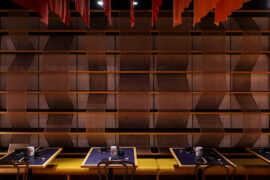
Designed by Kelly Ross, the newest addition to Bisa Hospitality’s portfolio represents more than just another restaurant opening.
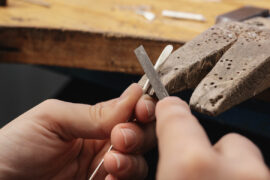
With the inaugural Glenn Murcutt Symposium set to take place in Sydney in September 2025, Pritzker Prize-winner Francis Kéré receives the Murcutt Pin.
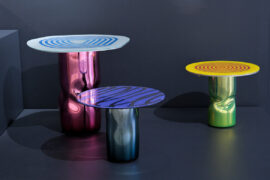
Despite its long and rich history, signwriting is a profession in decline. Will Lynes’ new show, Oily Water at Canberra Glassworks, aims to showcase the techniques of the trade to highlight its potential in design.
The internet never sleeps! Here's the stuff you might have missed
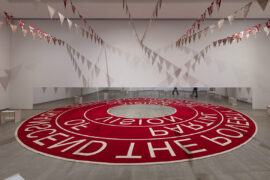
‘Breathing Helps’ is a major solo exhibition bringing together Nolan’s large-scale works with new commissions and performances.

In Tasmania, Stuart Williams crafts his work with care and creates objects of desire with sustainability at their heart.
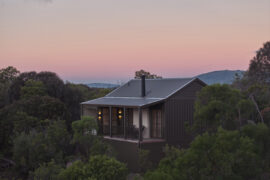
In what is already a peaceful idyll on the Mornington Peninsula, Kate Walker has crafted an intimate retreat with new villas for overnight stays at Alba.
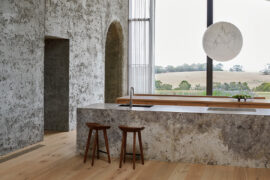
The INDE.Awards 2025 has named House on a Hill by Leeton Pointon Architects and Allison Pye Interiors as the winner of The Interior Space category, presented by Tongue & Groove. This multigenerational country home on Bunurong Country redefines residential architecture and design with its poetic balance of form, function, and sanctuary.